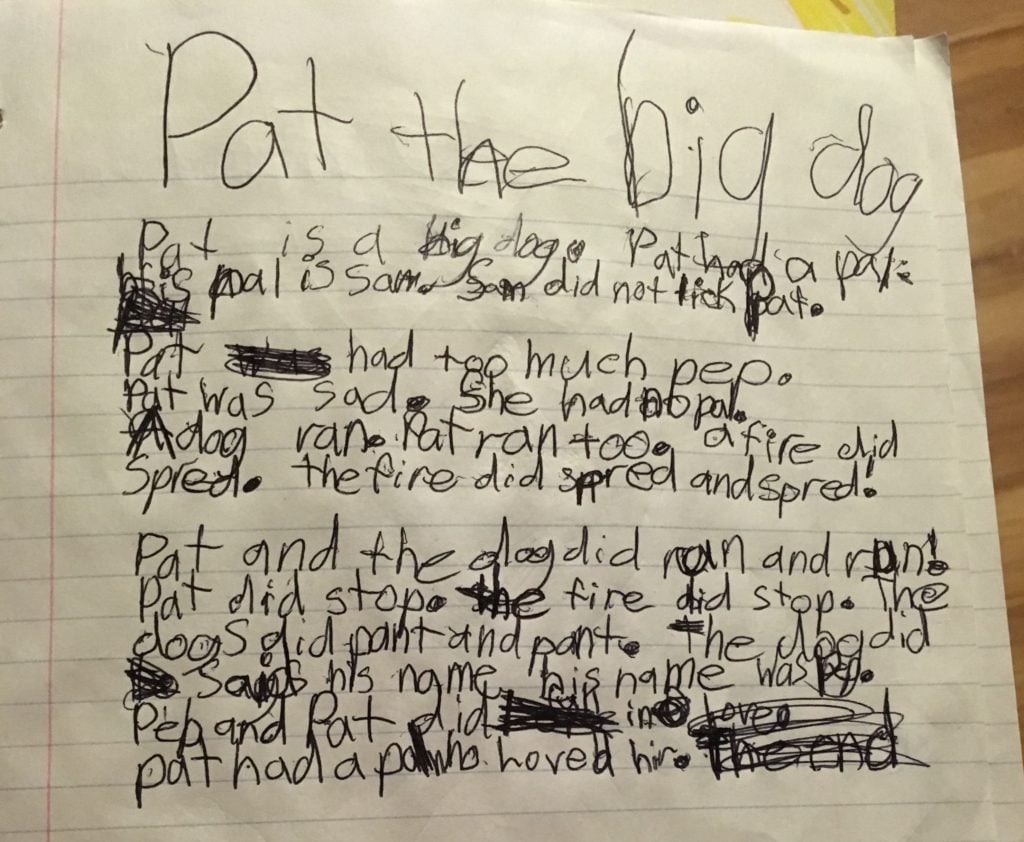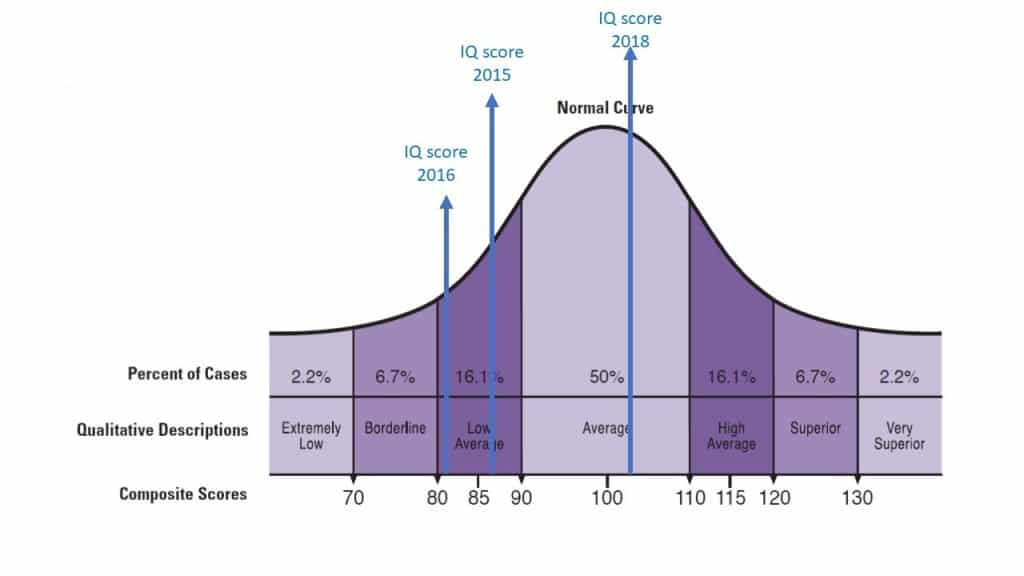
In 2015, Maddie was diagnosed with dyslexia. This diagnosis was changed to severe dyslexia in 2016, and diagnoses of moderate dyscalculia and ADHD were added. On top of that, Maddie’s Full Scale IQ score was 81, which is in the Low Average range. Three years of treatment yielded little results. Finally, in February 2018, Maddie embarked on the Edublox program. Her IQ score increased to 103, and she improved by 54 percentiles in reading.
Most severe dyslexia ever seen
Maddie had mixed dyslexia. Also known as a double deficit, she showed many signs and symptoms of both phonological dyslexia and orthographic dyslexia. She scored in the 1st percentile for reading — the lowest percentile — meaning that 99 percent of children her age were reading better than her.
People who evaluated Maddie said that they had never seen dyslexia as severe as this before. More than one professional had told Maddie’s parents that she would probably never read. Instead, professionals recommended her parents try to find things Maddie could be successful with outside of academics because she would never succeed academically.
Her mom, Kimberly, refused to accept this and worked tirelessly to help Maddie — with little success.
After Maddie was retained in kindergarten, Kimberly pulled her out of school to homeschool. First, they tried a phonics-based reading program. When this did not work, they switched to an Orton-Gillingham-based program — the “gold standard” for home use.
When this failed also, Kimberly hired a highly qualified NILD educational therapist who specializes in severe dyslexia and uses the same Orton-Gillingham-based program.
Maddie also did speech therapy and visual therapy.
Maddie continues to struggle
A year after starting treatment with the NILD therapist, Maddie could sound out words, but she did so slowly and painstakingly and had little to no fluency, even with simple CVC words.

“She continues to guess at words,” Kimberly told Edublox, “even when reading words that she knows how to sound out, so she makes a high percentage of errors when reading. Even the educational therapist seems baffled by this. Only a few days ago, she told me she had never had another student whose fluency did not improve with her tutoring.”
Kimberly continues: “Also, there has been very little improvement in directionality issues, BDPQ reversals, naming problems, and overall language, vocabulary, and verbal skills, despite the specialized tutoring, speech therapy, and visual therapy.
Maddie had severe naming problems and would frequently say words like “thing,” “stuff,” “it,” “that,” or “you know” because she couldn’t think of the words she needed to describe something.
“At this point, I had tried so many different things with little to no success that it is hard NOT to believe the professionals telling me that she is just never going to be able to read,” Kimberly told Edublox before she and Maddie embarked on a nine-month journey with Edublox.
Edublox journey commences
A program was customized to address Maddie’s deficits. Kimberly worked with her for two hours per day, five days per week, for 13 weeks. In addition, an Edublox tutor taught Maddie via Zoom for 30 minutes per day.
Forty minutes per day, five days per week, were spent on cognitive training. A language exercise was implemented to improve Maddie’s vocabulary; this exercise does not require any active time.
After 13 weeks, the work was reduced to one hour per day.
Maddie returned to school 22 weeks after she had started with Edublox. After an assessment, the school decided to put her in 4th grade.
Maddie’s psychologist reassessed her eight months after her Edublox journey had begun.
Overcoming severe dyslexia
Maddie’s progress is summarized in the video below. Here are two highlights:
Below is a graphic presentation of three IQ tests that were done, two before Edublox (2015 and 2016) and one after Edublox (2018). Compared to the assessment in September 2015, Maddie’s IQ score increased by 16 points and compared to the evaluation in September 2016 by 22 IQ points.

On May 5, 2019, Kimberly shared Maddie’s STAR Reading test results — five months after her Edublox journey had ended.
Maddie took the STAR Reading test at her school on May 2, 2019. Reading at 127 words per minute and achieving domain scores ranging between 81 and 94 percent, she ranked at the 55th percentile and scored above 55 percent of 4th-grade students nationally!

